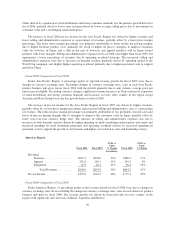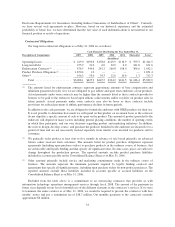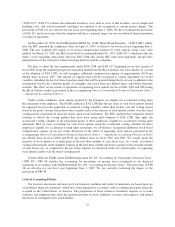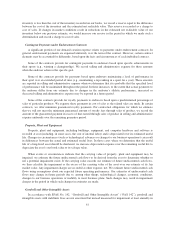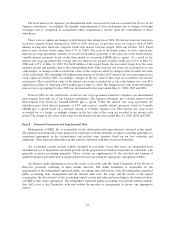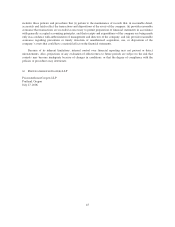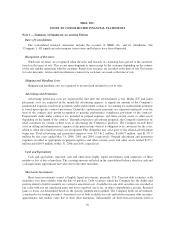Nike 2006 Annual Report Download - page 41
Download and view the complete annual report
Please find page 41 of the 2006 Nike annual report below. You can navigate through the pages in the report by either clicking on the pages listed below, or by using the keyword search tool below to find specific information within the annual report.non-functional currency denominated payments under intercompany loan agreements. When intercompany loans
are hedged, it is typically for their expected duration. Hedged transactions are principally denominated in euros,
Japanese yen, Korean won, Canadian dollars and Mexican pesos.
Our earnings are also exposed to movements in short and long-term market interest rates. Our objective in
managing this interest rate exposure is to limit the impact of interest rate changes on earnings and cash flows, and
to reduce overall borrowing costs. To achieve these objectives, we maintain a mix of medium and long-term
fixed rate debt, commercial paper, and bank loans and have entered into interest rate swaps.
Market Risk Measurement
We monitor foreign exchange risk, interest rate risk and related derivatives using a variety of techniques
including a review of market value, sensitivity analysis, and Value-at-Risk (“VaR”). Our market-sensitive
derivative and other financial instruments, as defined by the SEC, are foreign currency forward contracts, foreign
currency option contracts, interest rate swaps, intercompany loans denominated in non-functional currencies,
fixed interest rate U.S. dollar denominated debt, and fixed interest rate Japanese yen denominated debt.
We use VaR to monitor the foreign exchange risk of our foreign currency forward and foreign currency
option derivative instruments only. The VaR determines the maximum potential one-day loss in the fair value of
these foreign exchange rate-sensitive financial instruments. The VaR model estimates assume normal market
conditions and a 95% confidence level. There are various modeling techniques that can be used in the VaR
computation. Our computations are based on interrelationships between currencies and interest rates (a “variance/
co-variance” technique). These interrelationships are a function of foreign exchange currency market changes
and interest rate changes over the preceding one year period. The value of foreign currency options does not
change on a one-to-one basis with changes in the underlying currency rate. We adjusted the potential loss in
option value for the estimated sensitivity (the “delta” and “gamma”) to changes in the underlying currency rate.
This calculation reflects the impact of foreign currency rate fluctuations on the derivative instruments only, and
does not include the impact of such rate fluctuations on non-functional currency transactions (such as anticipated
transactions, firm commitments, cash balances, and accounts and loans receivable and payable), including those
which are hedged by these instruments.
The VaR model is a risk analysis tool and does not purport to represent actual losses in fair value that we
will incur, nor does it consider the potential effect of favorable changes in market rates. It also does not represent
the full extent of the possible loss that may occur. Actual future gains and losses will differ from those estimated
because of changes or differences in market rates and interrelationships, hedging instruments and hedge
percentages, timing and other factors.
The estimated maximum one-day loss in fair value on our foreign currency sensitive financial instruments,
derived using the VaR model, was $17.5 million and $25.7 million at May 31, 2006 and May 31, 2005,
respectively. The decrease in VaR as of May 31, 2006 occurred due to a lower notional value of outstanding
foreign currency derivative instruments as of May 31, 2006 compared to May 31, 2005. Such a hypothetical loss
in fair value of our derivatives would be offset by increases in the value of the underlying transactions being
hedged. The average monthly change in the fair values of foreign currency forward and foreign currency option
derivative instruments was $34.9 million and $37.2 million for fiscal 2006 and fiscal 2005, respectively.
40


